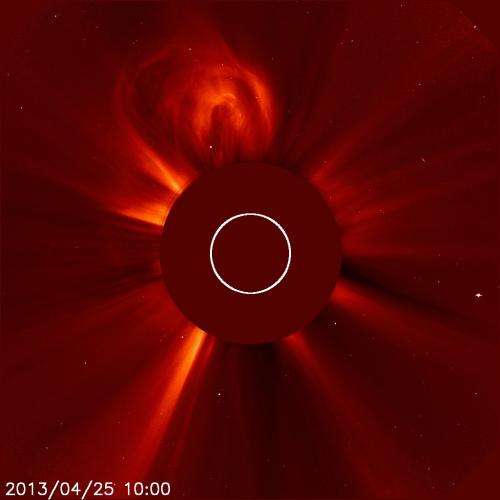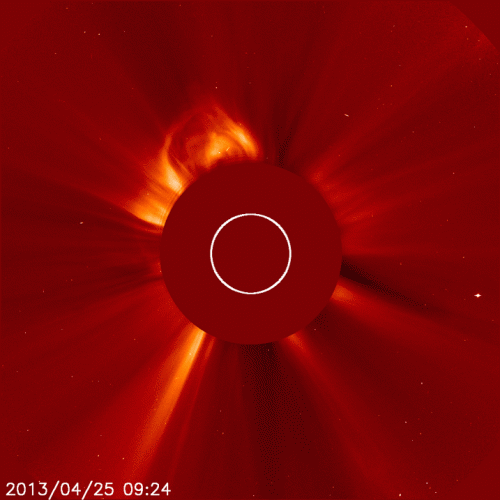The joint ESA and NASA mission the Solar Heliospheric Observatory (SOHO) captured this series of four images of a coronal mass ejection (CME) escaping the sun on the morning of April 25, 2013. The images show the CME from 5:24 a.m. to 6:48 a.m. EDT. This was the second of two CMEs in the space of 12 hours. Both are headed away from Earth toward Mercury. Credit: ESA&NASA/SOHO
On the night of April 24 and the morning of April 25, 2013, the sun erupted with two coronal mass ejections (CMEs), solar phenomena that can send billions of tons of solar particles into space that can affect electronic systems in satellites.
Experimental NASA research models show that the first CME began at 9:30 p.m. EDT on April 24. The second CME began at 5:24 a.m. EDT on April 25. Both left the sun traveling at about 500 miles per second and they are headed in the direction of planet Mercury.
Click Enlarge for animation. Credit: ESA&NASA/SOHO
While they are not Earth-directed, the CMEs may pass by NASA's Messenger and STEREO-A and their mission operators have been notified. There may be low levels of particle radiation associated with this event, which is what would normally concern operators of interplanetary spacecraft since the particles can trip computer electronics on board. When warranted, NASA operators can put spacecraft into safe mode to protect the instruments from the solar material.
Provided by NASA's Goddard Space Flight Center

























